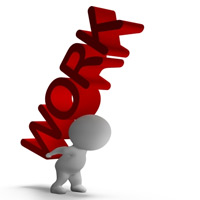
The Alexander Technique For Dummies is a slight put-down. ‘Calculus For Dummies’, ‘Biology For Dummies’, ‘Basket Weaving For Dummies’ , ”The Alexander Technique For Dummies’ are all slight put-downs. I realize these titles actually mean ‘for beginners’, but ‘For Dummies’ is a derogatory term. The only ‘For Dummies’ book I can think of that would not a put down and would, in fact, be uplifting and inspirational would be ‘Ventriloquism For Dummies’.
Alexander Technique For Dummies starts us off on the wrong foot.
Going up with the Alexander Technique
Instead of a put-down, we could use some lifting up, because most of us have been put down enough. We could do with less compressing, depressing, diminution, and contraction, and use more extending, expanding, elongation, and amplification. We could use a little more ‘up’. The Alexander Technique is not for dummies.
The Alexander Technique helps people feel better in body, mind and spirit. The Alexander Technique teaches you how to lift yourself up. But it isn’t heavy lifting. It’s about becoming aware of unwanted habits, postural and others, and letting them go. The Alexander Technique helps you identify and eliminate habits that cause poor posture and pain.
We Alexander Technique teachers begin lessons by setting up conditions whereby people are open to learning, experimenting, and trying something new. The Alexander Technique is not for dummies, but it is for people desiring change.
What changes do people want to see as the result of taking Alexander Technique lessons? Most often people want help with their posture, and to reduce and eliminate back pain and neck pain.
Improving posture
For improving your posture, let’s start with your neck. Are you poking your neck forward… right now?
It is a very common habit, and when you become more aware of it yourself you will see it in other people as well. When we crane our neck, we are compressing our spine, resulting in poor posture and pain. We poke our neck forward towards computer screens, cell phones, iPads, books, food, people, and mirrors. We poke our neck forward for reasons including imitation, anxiety, tension, fatigue, laziness, and boredom. Sometimes we poke our neck forward as if to project ourselves into the future, especially when late or stressed. We eventually poke our neck forward all the time simply because of habit. When we poke our neck forward we are poking our head forward. This is now commonly called ‘forward head posture’, also known as computer neck, Blackberry neck, text neck, or iPad neck. For our purposes it’s more useful to think of forward head posture as forward neck posture.
As you become aware of the excess tension in your neck muscles and release them, allow your neck to go back and up.
Let your jaw to release down and away from your skull.
Bring awareness to your shoulders and see if you have been unknowingly lifting them up. Instead, let them gently rest on your ribcage.
Let your head rotate forward and rise. You rotate your head forward by slightly, slowly, lowering your nose as the crown of your head moves up.
If your breathing hasn’t changed already, let it become fuller and slower.
If you are sitting, let your head move up taking your spine with it but, in opposition, let your sit bones release down into the chair. The sit bones are ‘U’ shaped bones at the bottom of your pelvis. Think of it as if you’re going up and down at the same time, elongating. If you are standing, your feet replace your sit bones.
The Alexander Technique takes practice, as does any other skill. But, you can practice the Alexander Technique for hours during the course of your everyday actions.
Comments always welcome.
Mark Josefsberg-Alexander Technique NYC
(917) 709-4648











Mark, I like this post. There is no question the Alexander Technique takes work, a commitment. I really think that if it were easy, everyone would be benefitting from its advantages. I actually like this aspect of it though; that it is not just a quick fix. It places the responsibility for your well being squarely where it belongs, not on a doctor or some external caregiver but directly on YOU. We are ultimately responsible for the entirety of our actions, including how we treat or mistreat ourselves. Thanks for a very nice post.
Thanks Jerry,
I’m glad you like this post. I agree that the Alexander Technique takes commitment, and I also like the self-care aspect of the Alexander Technique. To me, that’s one of the main reasons why it works. You don’t ‘do’ the Alexander Technique Tuesdays and Thursdays from 8-9. You apply the principles as you go about your life. You might end up practicing the Alexander Technique for hours a day while sitting, standing, walking, whatever. We get better at whatever we practice.
I think if the Alexander Technique was widely known, as widely known as Physical Therapy for example, many more people would be benefitting from it’s advantages. And boy, does it have advantages!
so many thanks. I’m sharing rhis as well on my FB pages and blog.
Thank you, Corinna!